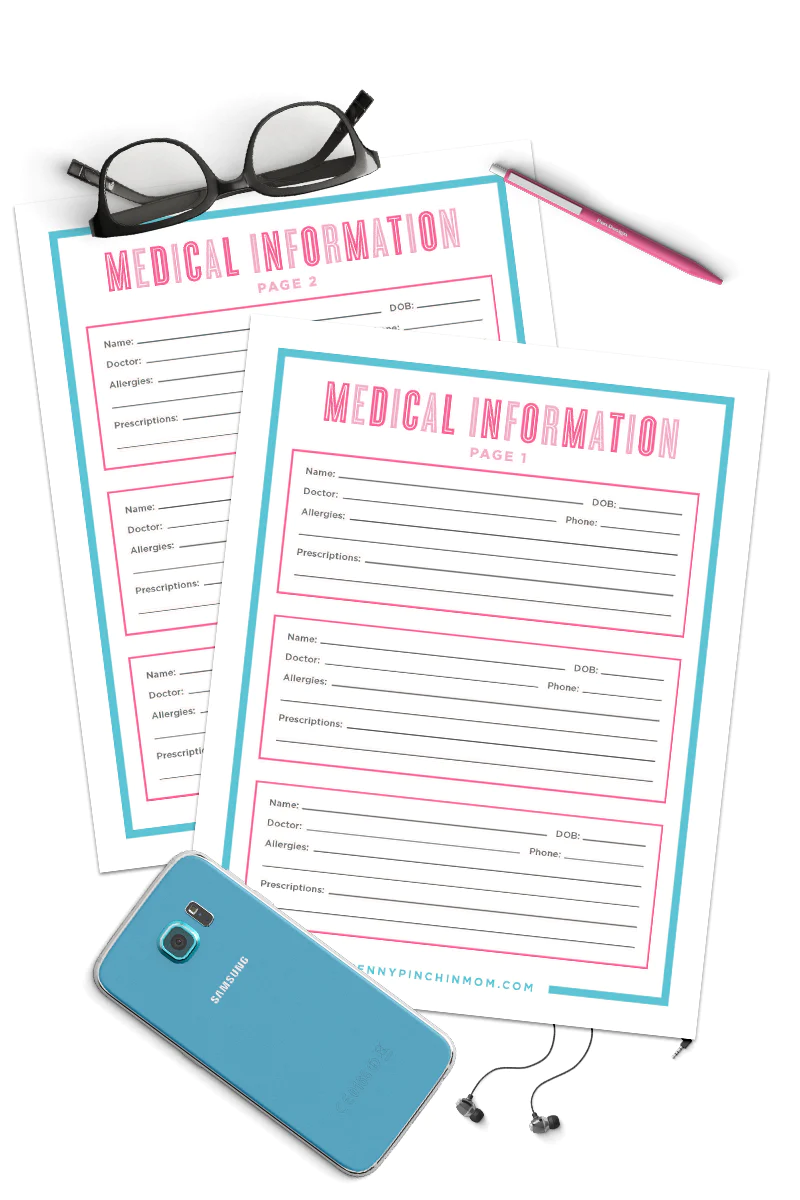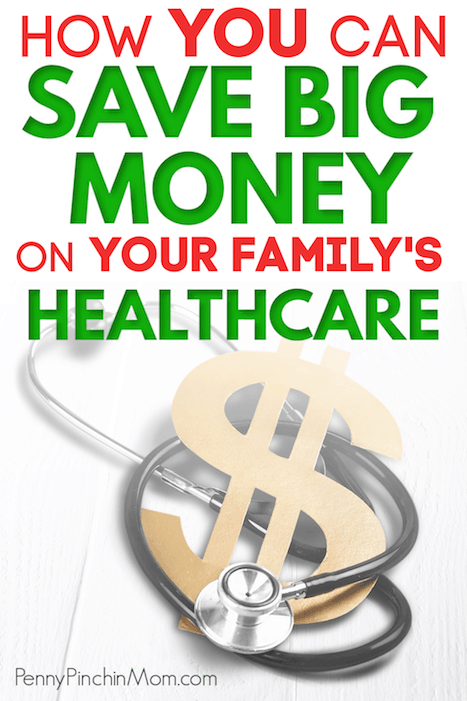If you ask many Americans, one thing that they need to save money on it is healthcare. With the rising costs of both insurance and medical bills, it certainly can keep you up at night.
You need healthcare coverage. That is especially true if you have children. They are good at getting sick and injured, so you need some coverage should you have a trip to the doctor.
But the truth is that many are forced to choose between putting food on the table or health insurance. It is a struggle.
The thing is that there are ways you can save on your healthcare costs. You just need to know where to look.
You don’t need to waste money on an expensive insurance plan jut to find out that you are not covered. There are many things you can do to not only save on medical expenses but your medications as well.
Saving Money on Health Insurance
Insurance is the one area where many families spend much of their healthcare budget. It is essential to get the coverage you need without overspending.
Shop for the best plan
You may be tempted to jump in and get the plan with the lowest monthly premium, a company you know or your employer. However, that may not be the best way to spend your money.
It is vital that you carefully compare plans. While the lowest premium is one factor, you need to also review the deductible (individual and family), out of pocket and limits. Once you know which plans to consider you need to compare the cost.
For example:
Plan A : $750 monthly cost; $50 co-pay and $5000 deductible
Plan B: $400 monthly cost; $100 co-pay and $1000 deductible
You may instantly think plan B is better. However, is it really? How often do you visit the doctor? And, if you have one big visit, you will pay more overall for Plan B than Plan A. Here’s how:
Plan A’s deductible would require a savings of $417/month to save $5,000 for the year. Plan B runs $833. When you combine the monthly amount, you need to pay + save; you would end up paying MORE for plan B ($1233 vs. $1167).
Get a high deductible plan
But it is more than just the premium and deductible that you need to consider. If your family rarely visits the doctor, you may be OK with a plan with a lower premium vs. someone else who has sick family members.
The premiums are often much lower on a plan with a higher deductible which can significantly save you money. Just make sure you also continue to build your saving account so that you can cover those additional costs, should they arise.
The other advantage of using a high deductible plan is that you can qualify for an HSA. An HSA is a health savings account. You can contribute funds to your plan and use them to pay your out-of-pocket expenses (not premiums). All of the funds are added pre-tax which may save you money come tax time.
Take advantage of your employer’s FSA
Your employer may offer an FSA, which is a Flexible Savings Account. You will have a set amount deducted from your paycheck each payroll period. That money is set aside and can be used to pay for any medical expenses such as prescriptions, doctor visits, and deductibles.
The important thing to know when it comes to using an FSA is that you must use the money by the end of the calendar year, or it is forfeited. Therefore, make sure you only save the amount you know you will use.
Consider higher a health insurance broker
The sea of healthcare can make you feel as if you are drowning. There are many factors to consider and want to make sure you make the right decision for your family.
You may need an insurance broker.
In most cases, these brokers are paid by the insurance companies meaning it costs you nothing out of your pocket. However, some do have fees (so make sure you ask before you sign up with them).
These brokers will take your personal information and needs into consideration to help you find the best, low cost, option for your family. It can be the simplest way to find affordable health insurance.
Skip traditional insurance
A relatively newer way to get healthcare coverage is to not even go the conventional health insurance route. Many are opting to take part in health sharing co-ops instead.
A co-op is where members all join together and pay a monthly fee. When a user has a medical expense, it is funded by the other members. Your payments will do the same thing — help others.
Two of the most popular providers are Medi-Share and Liberty Health Share. Both Medi-share and Liberty have a Christian affiliation. Both are excellent options for the family who needs health care coverage in a way that saves money. But keep in mind they are NOT health insurance.
While most medical providers accept health sharing co-ops, you will want to check with yours before you go this route.
Saving Money on Doctor’s Visits
If you have kids, there is a good chance you will end up in the doctor’s office a few times a year. Save on those visits with these ideas.
Pay with cash (and negotiate)
When you pay with cash, you may find your cost is less than if you pay with traditional insurance. But, don’t pay what they tell you to – unless you know it is a fair amount.
Do some research to find out what insurance companies will pay for the same diagnosis as every doctor will charge more for the visit than they end up getting paid. It’s true! The doctor may charge $150 but usually gets only $47 from insurance. Why should you pay more than $100 for your visit just because you pay with cash?
Check out Healthcare Bluebook before you pay. You will be able to research the average cost of various procedures and office visits where you live.
Make sure they accept your insurance
The first thing to do when you make your appointment is to ensure they accept your insurance provider. The billing departments may change the providers with whom they work, and you don’t want surprises when you walk through the door.
Skip the doctor’s office
There are countless walk-in clinics around the country. For example, you can find them at CVS or Walgreens. These providers often charge less than traditional doctor’s offices.
If you need to see someone for a simple infection or vaccine, using a walk-in clinic can save you quite a bit over the cost of a doctor’s office visit.
You will not see a doctor at these locations, but will instead visit with a nurse practitioner. He or she will be able to diagnose and prescribe medications to you.
Use free services
If you can’t afford any medial options, look for free clinics in your area. Free does not mean lousy service — it just means that the costs will not be passed along to you.
You can find free physicals, mammograms, and other services through these free clinics. They are open to anyone so use them if you need to.
Watch your bill
When the bill arrives, don’t just pay it. Make sure that everything was coded correctly and covered. If something was not included, do some investigating.
For example, the billing office may have used the wrong code, and so it shows you owe more than you do. It could be that you visited the ER and had an out of network doctor take care of you – and you are still obligated to pay only costs associated with the facility.
It is up to you to review the bill and make sure they are correct before you send in your payment.
Take care of yourself
The best way to save money is by not needing to see your doctor (outside of your regular annual checkups). You will do that by eating healthy and exercising.
When you take better care of yourself, you don’t end up as sick, and therefore that means fewer trips to the doctor.
Keep track of doctors, prescriptions and allergies for your family members with my free Medical Information Form
Remain in the network
When you get a referral from someone, ensure they are in the network. Just because they take your insurance does not guarantee they are in-network.
You will pay much less when using an in-network provider vs. someone who is not. These groups offer a set price for their patients, whereas others will charge what they want.
Save money on prescriptions
You may get a great price on your doctor’s visit, but what about the medications that are prescribed? They often cost more than the visit! I’ve shared some strategies for saving on prescriptions, but my favorites are listed below.
Talk to your doctor
The best way to save money on your medications is to let your doctor know you can’t afford them. He or she may be able to find a generic or less expensive alternative so you can take the mediations you need.
Get 90 days vs. 30 days
When you have medications, you take every day, opt for the 90-day refill instead of 30. Sometimes they can cost less, which keeps more money in your wallet. The added benefit is four pharmacy visits a year rather than 12.
Use a prescription drug card or app
Many companies are popping all the time trying to help you save money on your prescriptions. Two reputable companies are GoodRx and InsideRx. Both of them offer great ways for you to save on every visit to the pharmacy.
Even if you have insurance, you can use these programs and may find they cost you even less out of pocket!
Ask the pharmacy
There are often programs and services to help offset, or pay for, your prescriptions. For example, Walgreens offers a Prescription Drug Program which provides savings on thousands of medications.
Some stores offer points for your purchase, which can be used to cover non-medicinal items you may need to buy. If you don’t need to pay for shampoo, that is money you can use to pay for your medicines.
Get samples
Doctors offices have countless free samples on hand. Ask your doctor for these when they write your script, and if available, they will give some to you.
It may not be enough to cover all your needs, but it can lower the quantity you need to purchase and may save you money.
With a little understanding and research, it is possible to save money on healthcare for your family.


